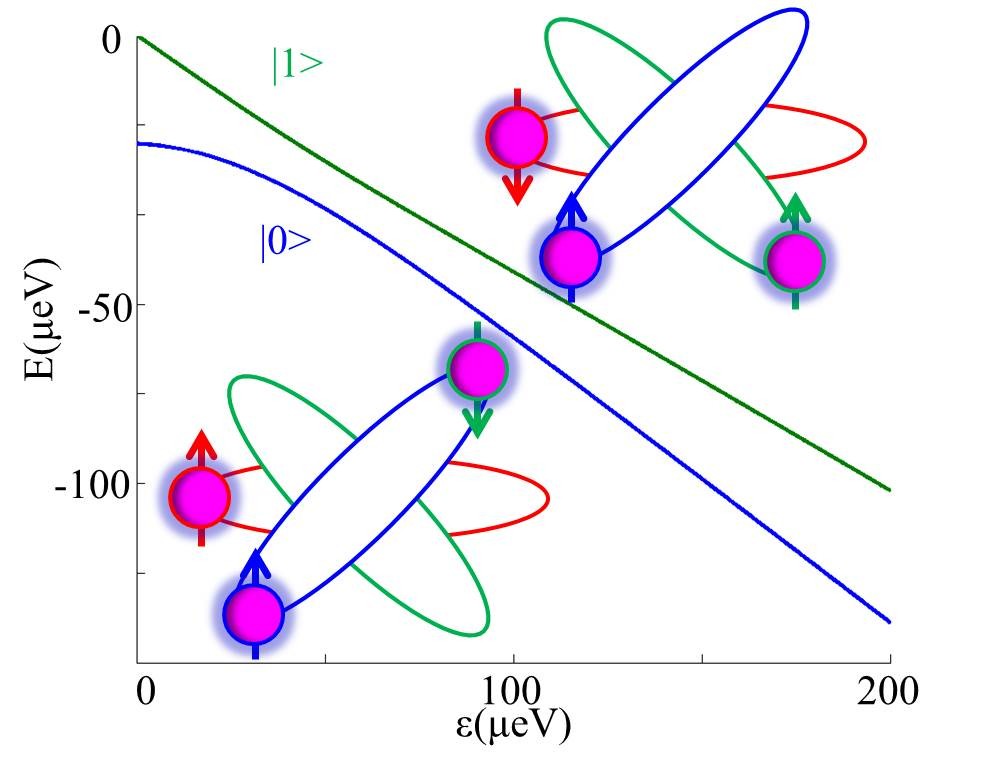A great progress in semiconductor quantum chip had been achieved by Key Laboratory of Quantum Information and Synergetic Innovation Center of Quantum Information & Quantum Physics of USTC. The jointed group of Professor GUO Guoping and researchers from UCLA and University at Buffalo experimentally demonstrated a highly tunable hybrid qubit with fast operation and long coherence time in a GaAs double quantum dot. The results was published on 25 February as “Tunable Hybrid Qubit in a GaAs Double Quantum Dot” (Physical Review Letters 116, 086801(2016)).
Similar with the modern computers, the quantum chip will be the “brain” of quantum computer in the future. Prof. GUO Guoping group focues on the development of semiconductor quantum chip. In the past three years, they had realized ultrafast universal quantum control of a single qubit (Nature Communications 4, 1401(2013)) and quantum Controlled-NOT logic gate of two qubits (Nature Communications 6, 7681(2015)) in semiconductor quantum dots. To get scalable semiconductor quantum computer, thousands of gate operations are needed within the qubit coherence time. It is highly desired to get an encoding method which can both be manipulated fast and have long coherence.

Schematic diagram of energy levels and electron orbital states
Hybrid qubit is one of the proposals to address this issue. Using the anharmonicity of quantum dot, the researchersexperimentally demonstrated a highly tunable hybrid qubit with fast operation and long coherence time in a GaAs double quantum dot. The results clearly illustrated that a few-electron system can have both fast operation rate and long quantum coherence. Compared with previous charge qubit, the coherence time of this hybrid semiconductor qubit was improved ten times to about 10ns.And different from the original hybrid qubit in Si/SiGe system, the new results quite correctly pointed out that the essential physics of the hybrid quantum dot qubit could be carried over into a polar and piezoelectric material. More importantly, these results made novel use of anisotropy in quantum dot confinement, which could be applicable in various semiconductor materials.
The work was supported by the Ministry of Science, the National Natural Science Foundation of China, Chinese Academy of Sciences and the Ministry of Education.
( Key Laboratory of Quantum Information and Synergetic Innovation Center of Quantum Information & Quantum Physics )